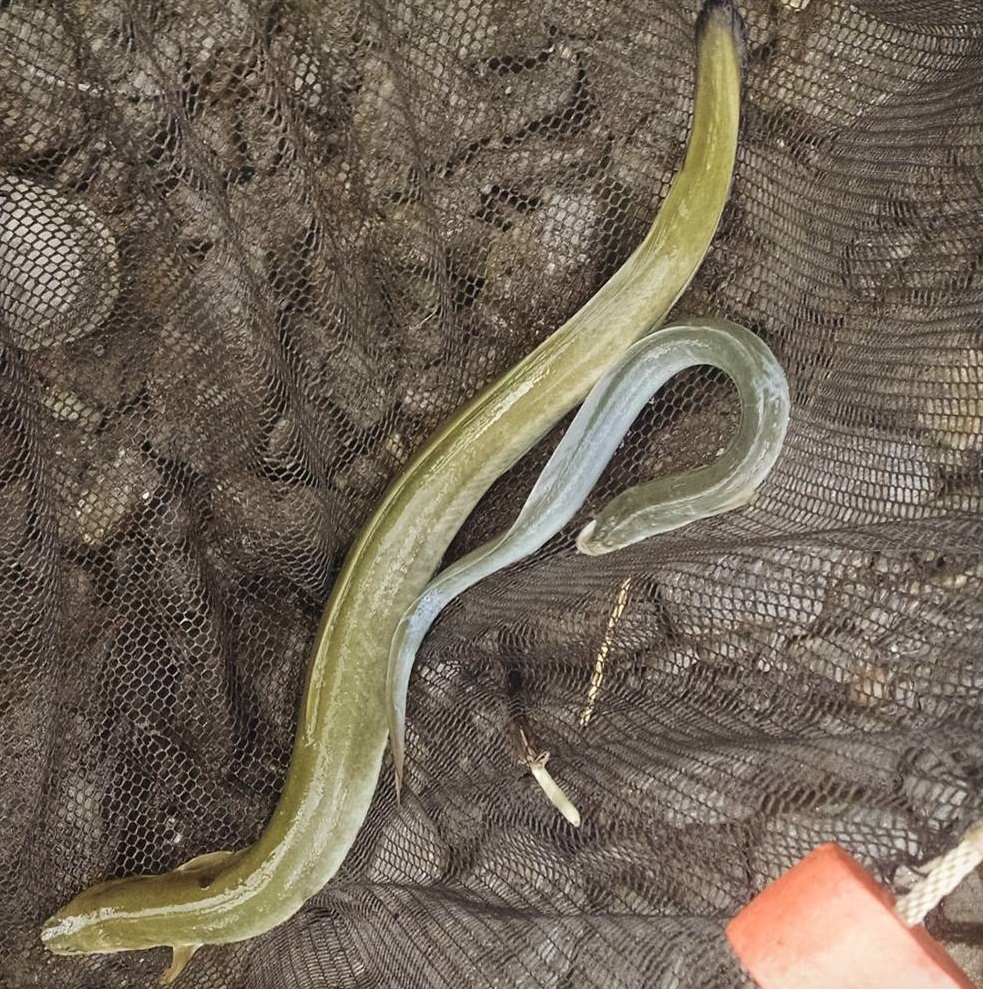Hudson River Animal of the Month: American Eel

Eli’s Fish Facts - American Eel
Anguilla rostrata
The American eel is a catadromous migratory fish, meaning that it spends most of its life in the brackish and freshwater rivers on America’s East Coast, and migrates back to the ocean to spawn in the Sargasso Sea before it dies. (Most other migratory Hudson River fish mate in the river and spend most of their lives in the ocean.) The amazingly mysterious thing about the eel, however, is that scientists have never actually witnessed eels spawning in the Sargasso, and they have never been observed mating in captivity. They’re also extremely difficult to keep in captivity, as these “Houdinis” manage to escape from enclosed surroundings and can survive for up to 24 hours in a moist environment.
I could go on for pages about American eels, but the last thing I’ll talk about here is the several stages of metamorphoses in their life cycle. They start out as small, willow-shaped larvae that float as zooplankton in the ocean until they reach the mouth of a river, which can take up to a year. By that time, they have started developing fins, morphing them into the glass eel phase that bring them into the rivers along the east coast, only a few inches long and with transparent bodies. As they mature, they’re called elvers, indicating that they have surpassed 4 inches in length and have gained some pigmentation. They then turn into yellow eels as they live in the rivers, gaining their sandy, yellowish-green pigmentation and sometimes growing several feet long. After they’re fully sexually mature (yellow eels), their bodies change yet again before they make their journey back to the Sargasso Sea. They stop feeding on the journey so their fat stores increase while their stomach degenerates, and their eyes double in size to be able to complete their life journey through the deep, dark, ocean.
Each spring CURB tracks migrating glass eels as part of the DEC's American Eel Migration Project. For more information check out the eel page of our website.
Meet the Fish: American Eel